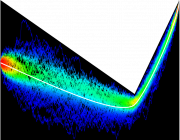Citation:
Sadun L, Taillefumier T. Global solutions with infinitely many blowups in a mean-field neural network. [Internet].
Abstract
We recently introduced idealized mean-field models for networks of integrate-and-fire neurons with impulse-like interactions — the so-called delayed Poissonian mean-field models. Such models are prone to blowups: for a strong enough interaction coupling, the mean-field rate of interaction diverges in finite time with a finite fraction of neurons spiking simultaneously. Due to the reset mechanism of integrate-and-fire neurons, these blowups can happen repeatedly, at least in principle. A benefit of considering Poissonian mean-field models is that one can resolve blowups analytically by mapping the original singular dynamics onto uniformly regular dynamics via a time change. Resolving a blowup then amounts to solving the fixed-point problem that implicitly defines the time change, which can be done consistently for a single blowup and for nonzero delays. Here we extend this time-change analysis in two ways: First, we exhibit the existence and uniqueness of explosive solutions with a countable infinity of blowups in the large interaction regime. Second, we show that these delayed solutions specify “physical” explosive solutions in the limit of vanishing delays, which in turn can be explicitly constructed. The first result relies on the fact that blowups are self-sustaining but nonoverlapping in the time-changed picture. The second result follows from the continuity of blowups in the time-changed picture and incidentally implies the existence of periodic solutions. These results are useful to study the emergence of synchrony in neural network models.


